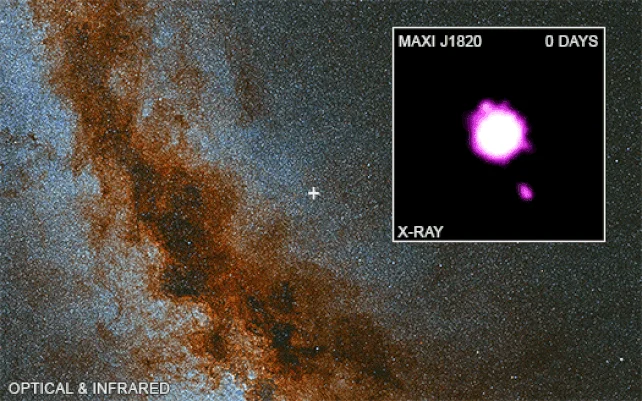In a groundbreaking study, researchers have finally provided direct observational evidence of a region around black holes where matter plunges straight down into the abyss, rather than orbiting around it. This phenomenon, long predicted by Einstein’s theory of general relativity, has now been visually confirmed through X-ray data analysis, marking a significant milestone in astrophysics.
Andrew Mummery, a theoretical physicist at Oxford University, likens this discovery to witnessing a waterfall after only ever seeing the river leading to it. “Einstein’s theory predicted that this final plunge would exist, but this is the first time we have been able to demonstrate it happening,” Mummery explains.

The plunge zone
Matter approaching a black hole usually spirals inward, much like water swirling down a drain. However, Einstein’s equations predicted that at a certain point, this spiralling matter would transition into a free-fall plunge, heading straight towards the event horizon, the infamous point of no return.
This transition zone, known as the plunging region, has been notoriously difficult to observe directly due to the extreme warping of space-time around black holes. But recent high-quality X-ray data from the black hole MAXI J1820+070, located about 10,000 light-years away, has changed that.
Capturing the plunge
MAXI J1820+070, a black hole approximately 8.5 times the mass of the Sun, draws material from its binary companion star. This process produces bursts of X-ray light, which astronomers have been closely monitoring to understand black hole behaviours. Using the NuSTAR and NICER instruments in low-Earth orbit, researchers captured an outburst in 2018 that revealed an unexplained glow in the data.
This glow was suspected to originate from the plunging region, and Mummery’s team set out to confirm this. They developed numerical simulations and models to predict the specific light emission characteristics of matter in the plunging zone. The observations from MAXI J1820+070 matched these simulations, providing the long-sought proof of the plunging region’s existence.
Implications for Black Hole Research
This discovery offers a new tool for studying black holes and the extreme gravitational forces they exhibit. “What is really exciting is that there are many black holes in the galaxy, and we now have a powerful new technique for using them to study the strongest known gravitational fields,” says Mummery. This allows astrophysicists to probe the most intense gravitational environments in the universe more closely than ever before.
The study, published in the Monthly Notices of the Royal Astronomical Society, represents a significant advancement in our understanding of black holes and general relativity. Observing the plunging region confirms Einstein’s predictions and opens up new avenues for exploring the enigmatic environments surrounding black holes.
This breakthrough not only enhances our comprehension of black holes but also reinforces the robustness of Einstein’s theory of gravity in describing the universe’s most extreme phenomena. As we continue to refine our observational techniques, more such revelations are sure to follow, further unravelling the mysteries of the cosmos.





